The Buffalo Sabres playoff drought hit 13 seasons this year. The vibes have come and gone through the past couple of seasons, but it hasn’t been enough to put together a serious run at ending the playoff drought. Head Coach Don Granato paid the price this week, as he was let go and the Sabres brought back Lindy Ruff. What will it take for the Sabres to find their way back into the postseason?
Roster Ruminations
NHL Roster
The coaching change might very well be the move that pushes the Sabres to the next level, although it may not be the true underlying cause. Their projected performance for next season looks quite strong in the model, with the exception of HD Corsi rates. Perhaps a new coach can find the adjustments needed to improve that. The Sabres have a handful of pending UFAs this summer, but none of their core players are on that list. It’s a young team that should find some internal growth as a group and looks well positioned to take a step forward next season.
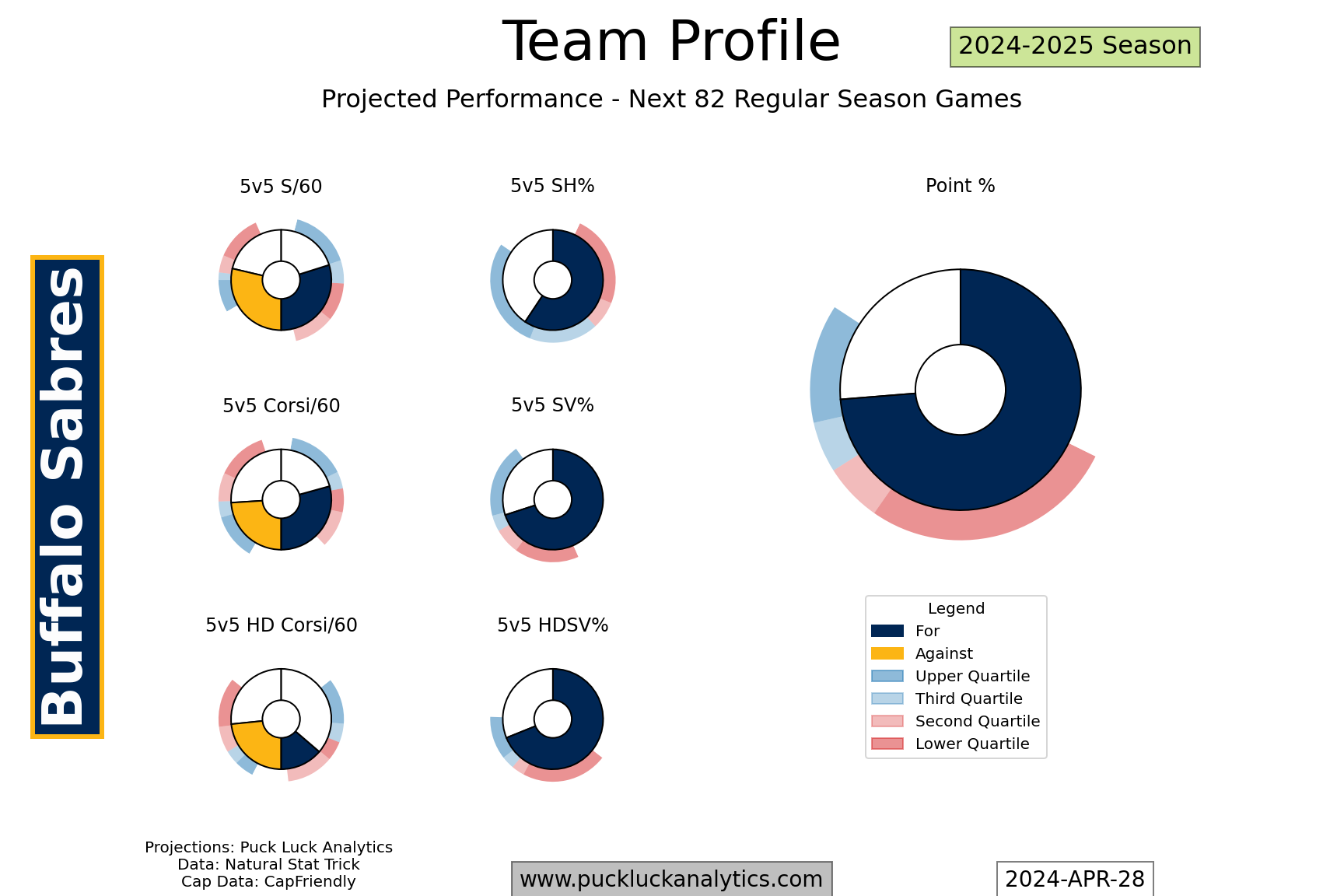
Salary Cap Management
The Sabres have locked up a significant number of core pieces to long term deals, particularly on the back end. The long term plan appears to be largely taking shape. The Sabres do have room to add in the short term as well, with over 15% of next years cap space available. Peyton Krebs and Ukko-Pekka Luukkonen are their most notable RFAs, so there should be room to bring in a bit of outside help for next season if they want to.
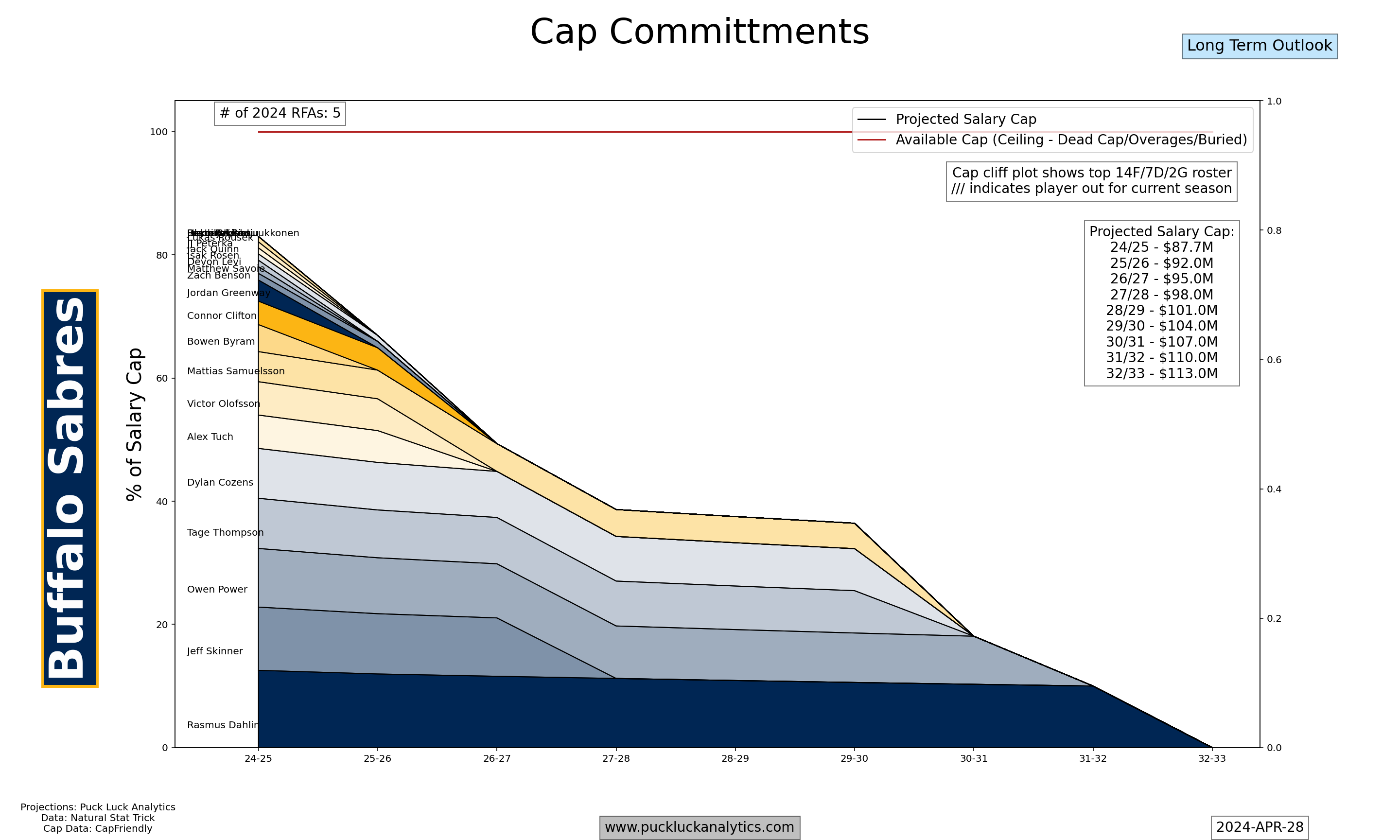
Future Assets
While it’s the Sabres younger players starting to drive their NHL roster, they still have more in the pipeline. Hockey Prospecting ranks Buffalo 5th in the NHL for their prospect pool, which includes Matthew Savoie and Zach Benson. Their collection of picks in the next three drafts is nothing spectacular, but it’s above baseline so they have a reasonable amount of draft capital at their disposal as well.
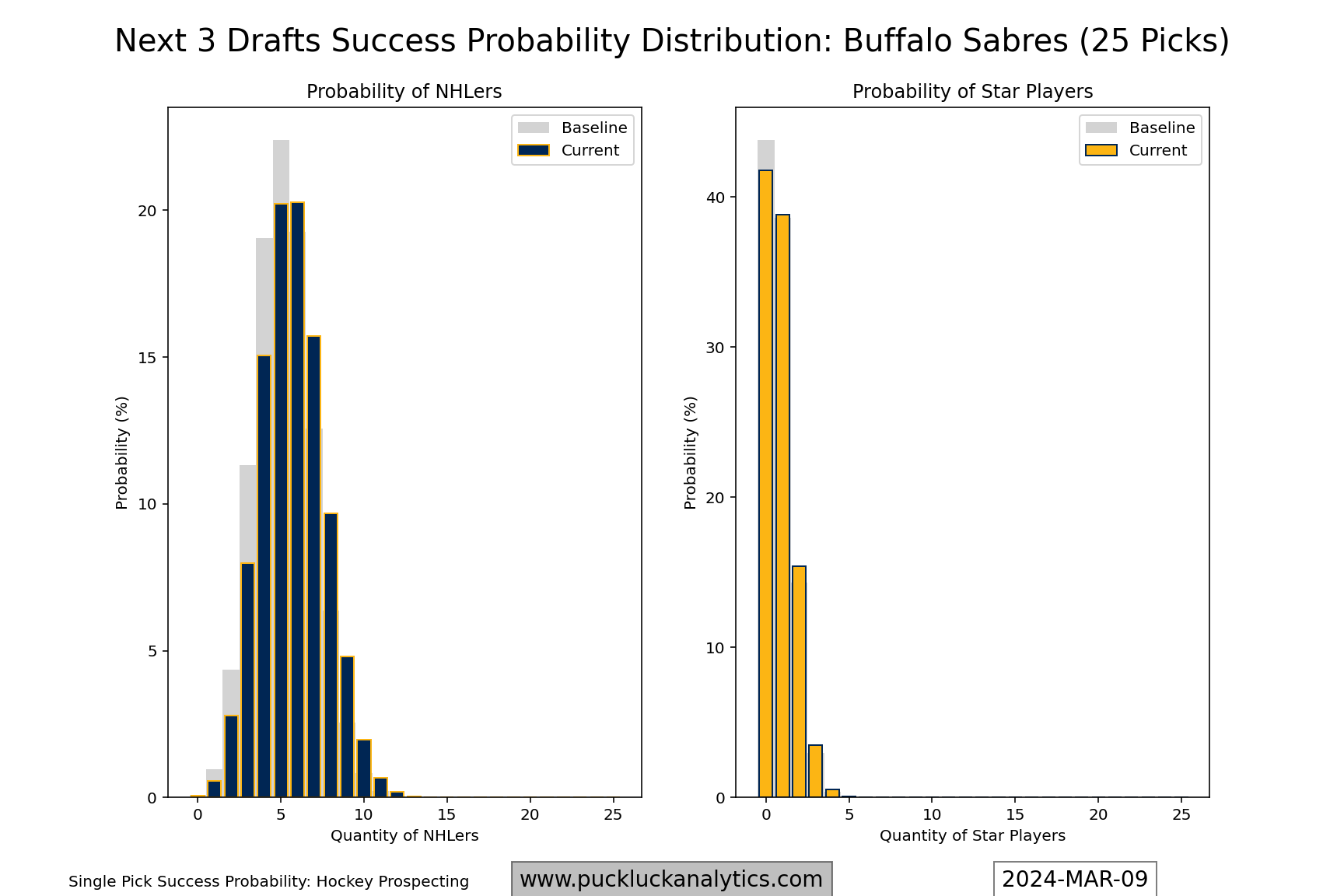
What’s Next?
The Sabres have put together an impressive group of young defensemen. Rasmus Dahlin and Owen Power have clearly been the plan for a 1-2 punch on the blueline since Power was drafted in 2021. Dahlin is just starting to hit his prime, while Power should have a few years of development runway left. Both have extensions that kick-in with big cap hits next season and they form the base of the Sabres’ cap profile. The also have Mattias Samuelsson in the fold and added Bowen Byram at the trade deadline this season. Dahlin and Samuelsson are the elder statesmen of the group at age 24. It’s a solid group to build a D-core around, that still has some development potential.
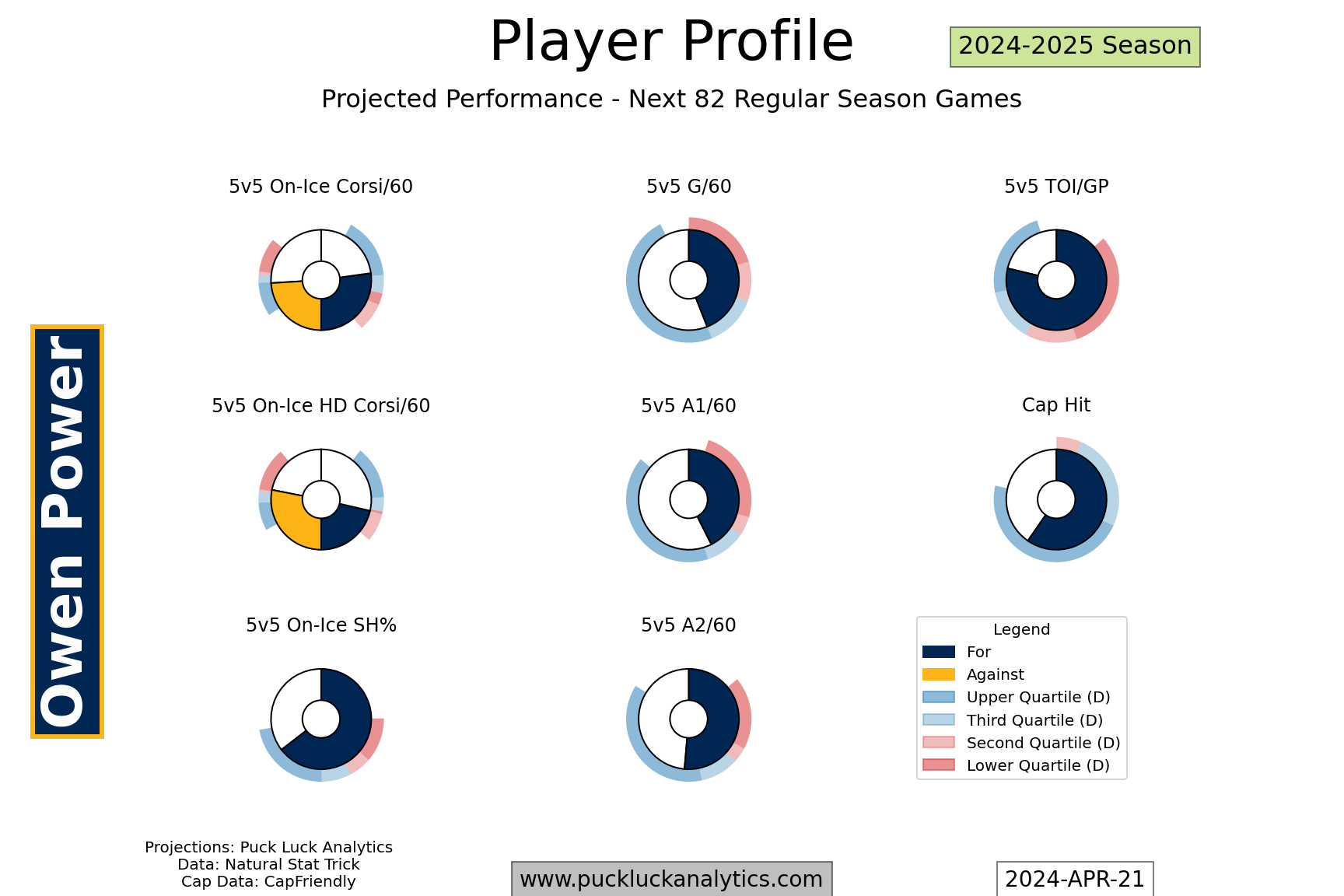
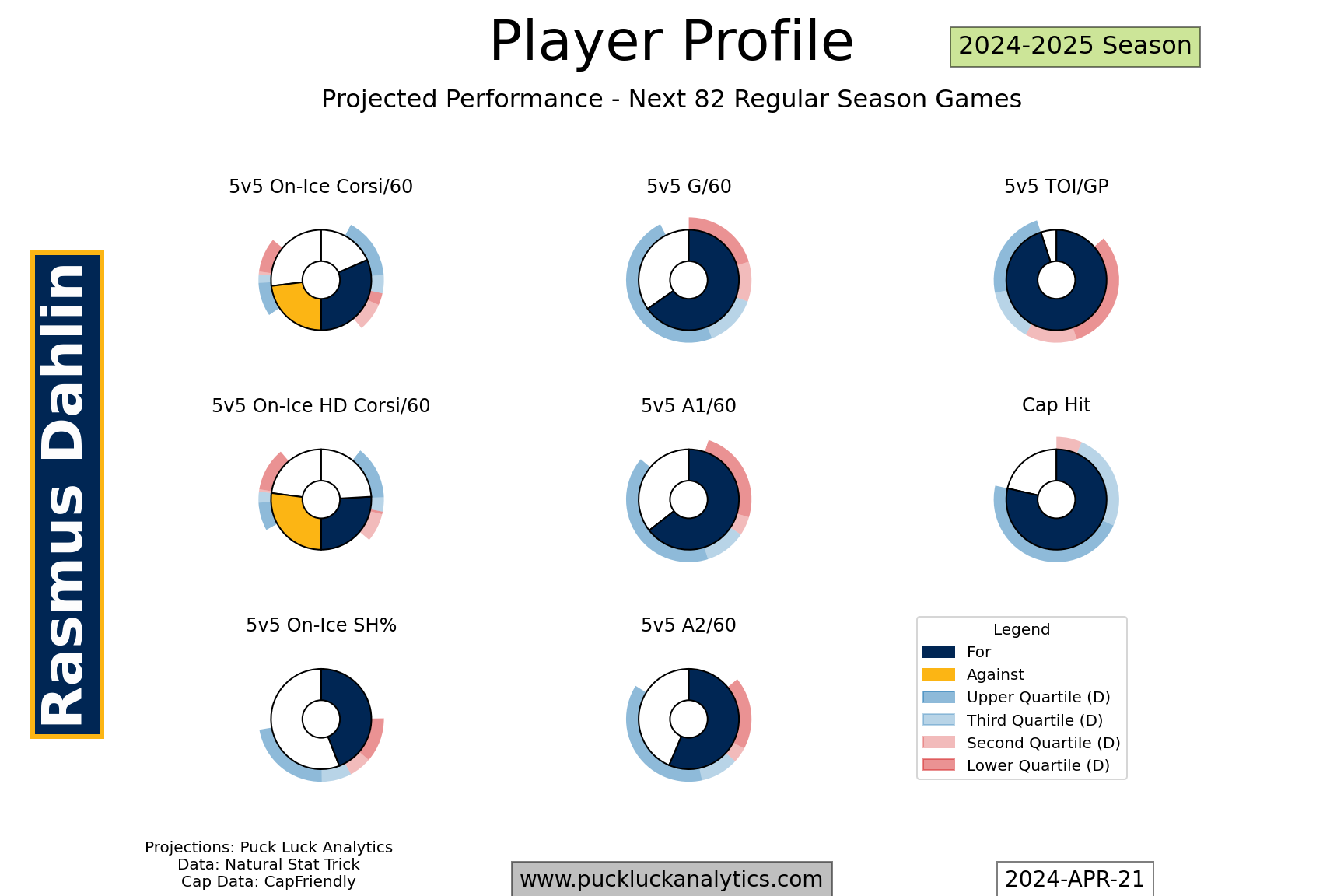
The forward group that the Sabres intend to contend with is less well defined simply by looking at their cap sheet. Right now, the forward group is led by an older group than the defense. Alex Tuch and Tage Thompson are key drivers, while others like Jeff Skinner and Zemgus Girgensons are in supporting roles. Management doesn’t seem stuck on keeping the veterans around though, evidenced by the trade that sent captain Kyle Okposo to the Panthers at the deadline.
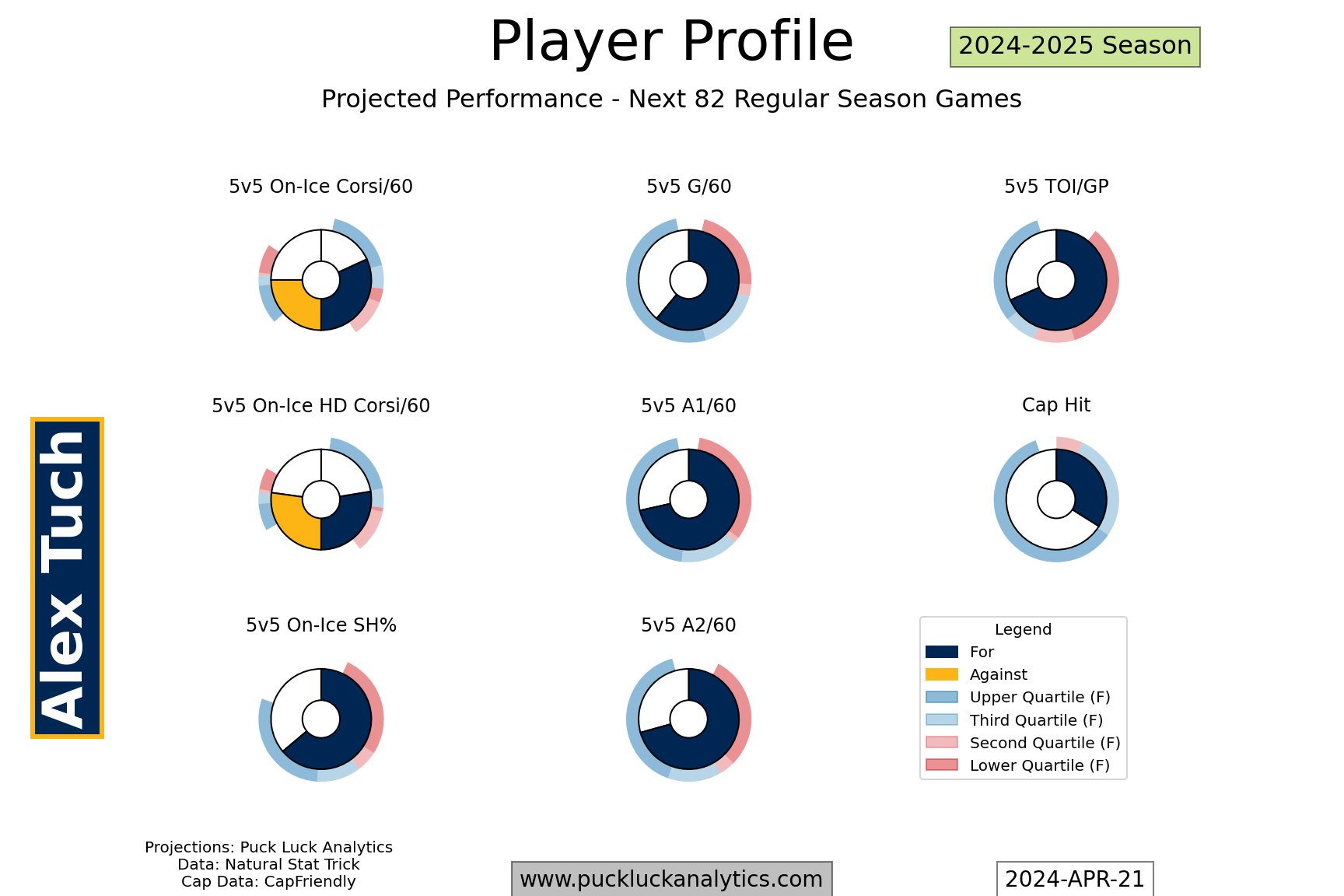
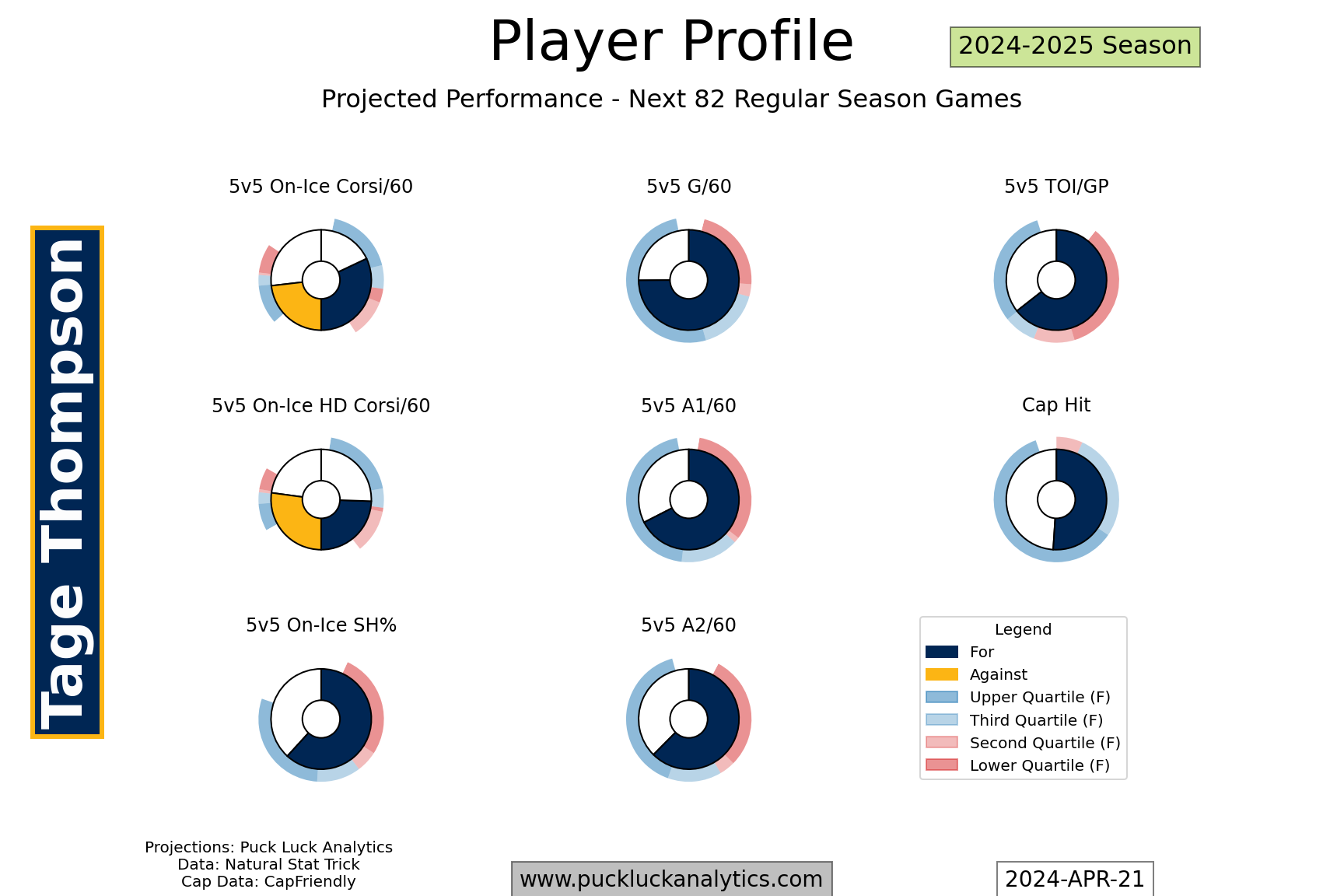
That shift away from their older players should continue, providing their younger forwards with more opportunity to contribute at the NHL level and continue their development. The Sabres have a wave of forwards age 23 and under coming through their system, including the likes of Jack Quinn and JJ Peterka. We’ve seen this group start to infiltrate the NHL roster and it should continue, with more exciting prospects in the pipeline.
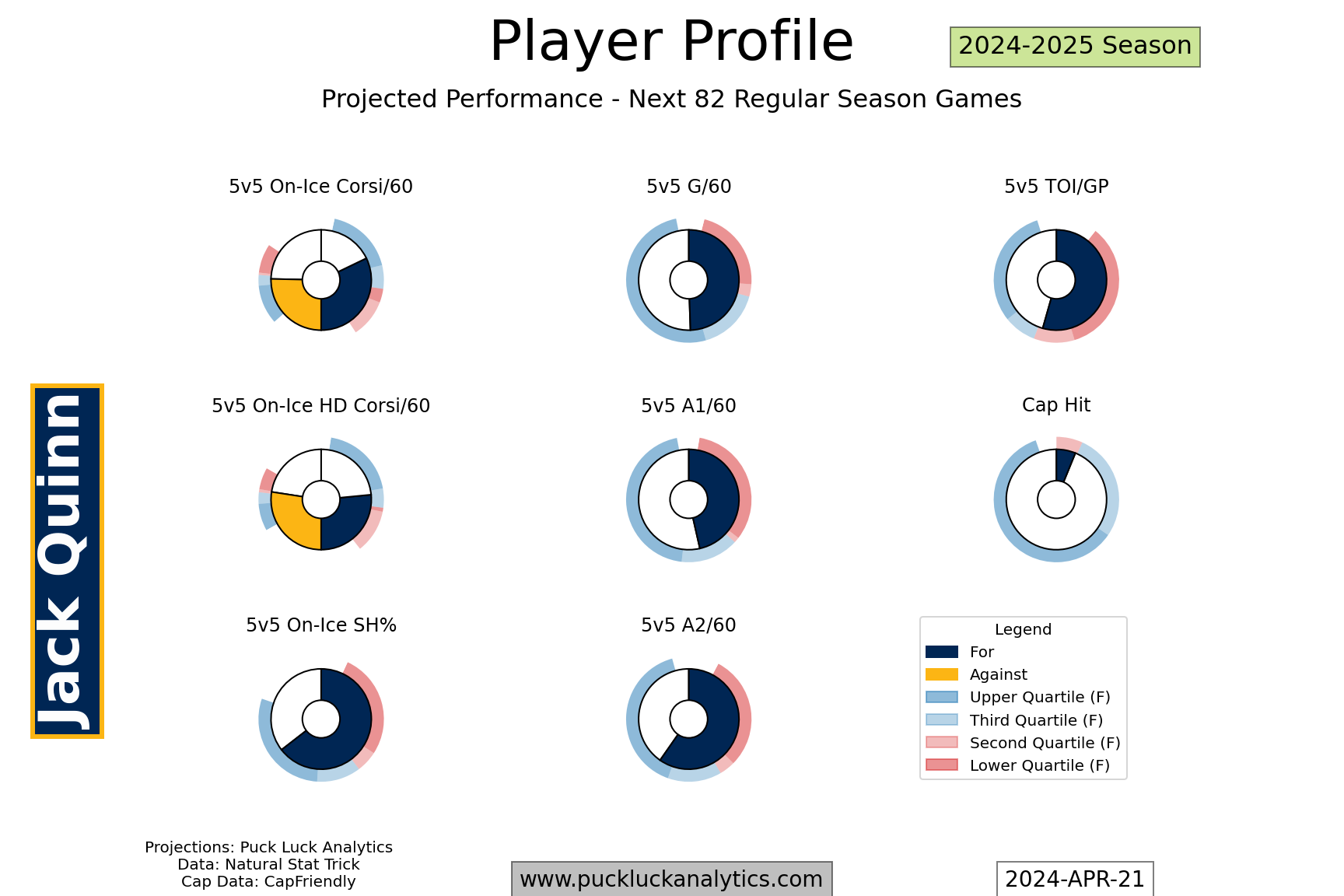
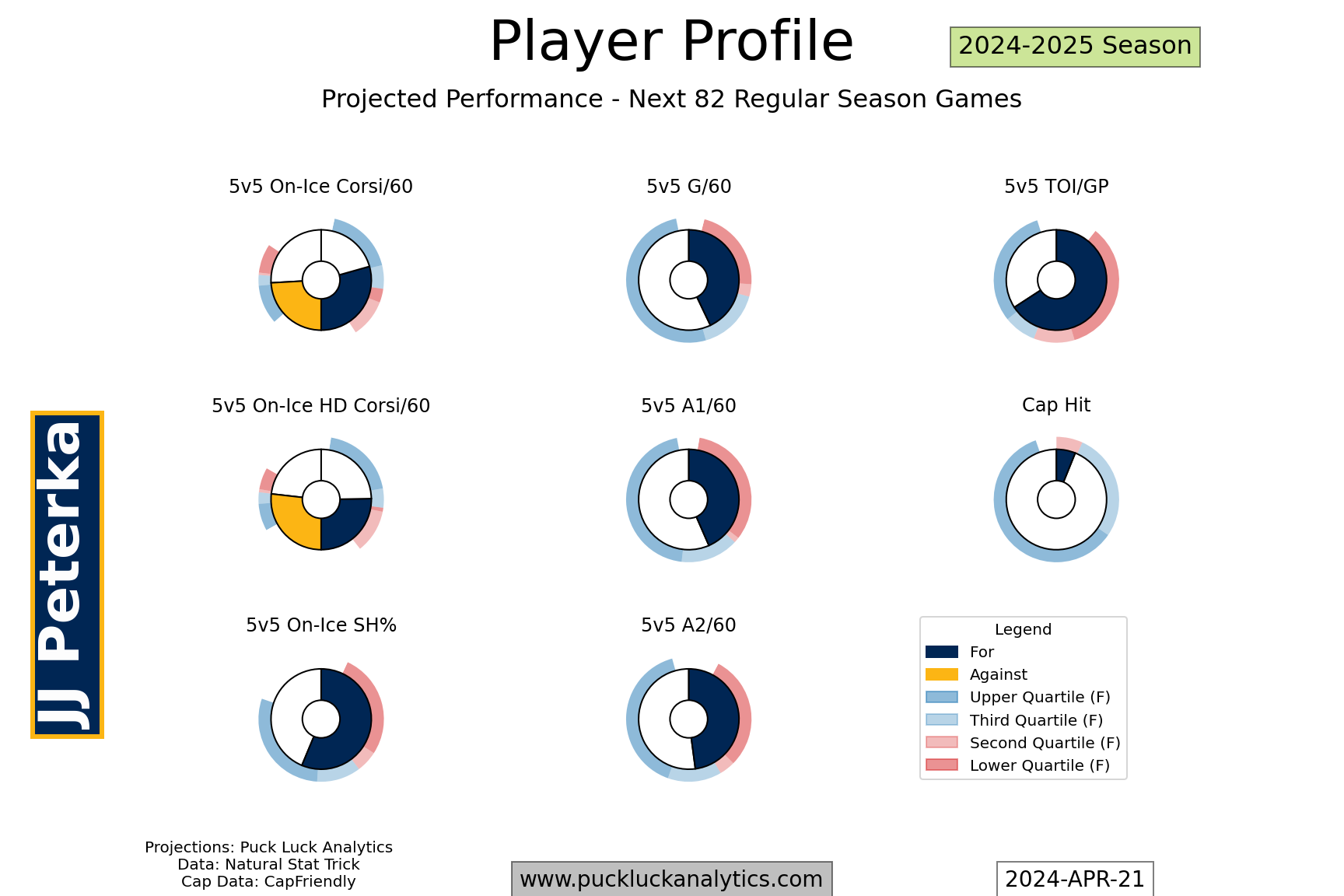
It’s been a long road, but the Sabres look poised to end their playoff drought soon enough. If they stick to the plan and continue to make space for their young players, they look ready to take a step forward. If they carefully manage the older portion of their roster and turn it over in a methodical way, they should also be able to supplement the internal growth.



